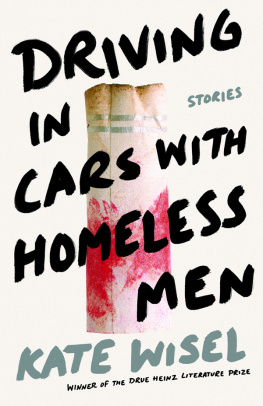NATIONAL INSTITUTE SOCIAL SERVICES LIBRARY
Volume 13
HOMELESS NEAR A THOUSAND HOMES
First published in 1971 by George Allen & Unwin Ltd
This edition first published in 2022
by Routledge
2 Park Square, Milton Park, Abingdon, Oxon OX14 4RN
and by Routledge
605 Third Avenue, New York, NY 10158
Routledge is an imprint of the Taylor & Francis Group, an informa business
1971 George Allen & Unwin Ltd
All rights reserved. No part of this book may be reprinted or reproduced or utilised in any form or by any electronic, mechanical, or other means, now known or hereafter invented, including photocopying and recording, or in any information storage or retrieval system, without permission in writing from the publishers.
Trademark notice: Product or corporate names may be trademarks or registered trademarks, and are used only for identification and explanation without intent to infringe.
British Library Cataloguing in Publication Data
A catalogue record for this book is available from the British Library
ISBN: 978-1-03-203381-5 (Set)
ISBN: 978-1-00-321681-0 (Set) (ebk)
ISBN: 978-1-03-205101-7 (Volume 13) (hbk)
ISBN: 978-1-03-205112-3 (Volume 13) (pbk)
ISBN: 978-1-00-319604-4 (Volume 13) (ebk)
DOI: 10.4324/9781003196044
Publishers Note
The publisher has gone to great lengths to ensure the quality of this reprint but points out that some imperfections in the original copies may be apparent.
Disclaimer
The publisher has made every effort to trace copyright holders and would welcome correspondence from those they have been unable to trace.
First published in 1971
This book is copyright under the Berne Convention. All rights are reserved. Apart from any fair dealing for the purpose of private study, research, criticism or review, as permitted under the Copyright Act, 1956, no part of this publication may be reproduced, stored in a retrieval system, or transmitted, in any form or by any means, electronic, electrical, chemical, mechanical, optical, photocopying, recording or otherwise, without the prior permission of the copyright owner. Enquiries should be addressed to the publishers.
George Allen & Unwin Ltd 1971
ISBN 0 04 301033 4 cloth
0 04 301042 3 paper
PRINTED IN GREAT BRITAIN
in 11 point Fournier type
by Cox & Wyman Ltd, Fakenham
The illustrations used in this book are true, but all the names of people and sometimes of places have been changed.
ACKNOWLEDGMENTS
The title is taken from the poem Guilt and Sorrow by William Wordsworth:
And homeless near a thousand homes I stood,
And near a thousand tables pined and wanted food.
This study began in 1966 with the encouragement and co-operation of Mr W. D. Davies and Mr I. R. Jenkins, Childrens Officer and Director of Welfare Services for Glamorgan County Council. It has benefited throughout by the advice of Mr S. G. Wilkinson, Principal Assistant Childrens Officer for Glamorgan. In 1969 a grant was received from the Department of Health and Social Security to enable the project to be extended into other areasthe County Boroughs of Cardiff, Swansea and Bristol and County Councils of Gloucestershire and Somerset as well as Glamorgan. Councillors and officials of these local authorities, staff of Department of Health and Social Security Offices and members of many other agencies, statutory and voluntary, gave their support generously.
Nine part-time researchers joined the projectMrs Brenda Master-man, Mrs Suzanne Young, Miss Mary Sharp, Mrs Margaret Lowe, Mrs Stella Thompson, Mrs Christine Jones, Mrs Lilian Daniels, Mrs Peggy Simons and Mrs Jane Meager. Their primary task was obtaining information for family case histories, but some of them helped in writing up the study. Mrs Christine Jones contributed extensively to the first part of Chapter 5 and the middle section of Appendix I; Mrs Brenda Masterman to the last sections of Chapters 7 and Appendix I; Mrs Suzanne Young to the first part of Appendix I and Miss Mary Sharp to the penultimate section of Chapter 7. Mrs Rita Austin and Mrs Mary Viner helped to prepare and programme the statistical findings for computation. Miss Deirdre Hogarth was secretary to the project, bringing order to the chaos, and was assisted in typing drafts by Mrs Denise Johns, Mrs Iris John, Mrs Liz Evans, Mrs Jose Nuttall and Mrs Marion Rees. My tolerant colleagues in the Social Administration Department took over some of my teaching to free me for this work and three of them, Dr Michael Ryan, Mr. A. V. S. Lochhead and Miss Grace Trenchard, made useful comments on the drafts. The Director of Social Administration courses at Swanseainitially Mr. Lochhead and later Mr R. A. B. Leapergave the project continued encouragement. Mr Robin Huws Jones of the National Institute for Social Work Training gave detailed and valuable comments.
Lastly, and most importantly, many homeless families allowed us to pester them and to probe the intimate depths of their difficulties.
FOREWORD
BY JOHN GREVE
Professor of Social Administration in The University of Southampton
This book by Bryan Glastonbury is another contribution to the melancholy story of homelessness in contemporary Britain. It describes the experiences of some of the homelesshow they became homeless, the helplessness and bewilderment that are the permanent lot of many, and the misery that is a constant accompaniment. All this experienced acutely by thousands of people on any day of the yeara quarter of a century after the creation of the so-called Welfare State. All this in the midst of a society committed to affluence. And homelessness is no ephemeral phenomenon but a growing feature of our society.
While the national product and, for the majority, personal real incomes rose in the 1960s so did the number of homeless. Government statistics show that during the decade the number of persons in England and Wales who were in local authority temporary accommodation doubled. But there are strong reasons for believing that the official figures understate the incidence of homelessness.
No one knows the true figures of homelessness. Nor, with strikingly few notable exceptions, has much time or effort been expended by the responsible public authorities on discovering the precise causes or measuring the real effects on individual persons and families. But here the initiative taken by the Department of Health and Social Security should be acknowledged, for in 1969 the department commissioned research teams to study homelessness in Greater London and in South Wales and the rest of England, respectively.
A major defect of official statistics is that they refer only to what would be more accurately described as homeless families with dependent children. Thus, homeless adults not accompanied by children or whose children happen to be over 16 years of age are not usually admitted to local authority temporary accommodation. Some local authorities exclude husbands, presumably, like the Poor Law workhouses, on the ground that a family might become too comfortably ensconced in a welfare hostel if it remains united and lose the will to look for its own accommodation. Other local authorities, however, either do not regard this as a great danger ornot surprisingly perhaps for statutory welfare authoritiesare enlightened enough to consider the risk preferable to splitting up a family whose stability is already under great strain.
If homeless people of pensionable age are admitted they are not likely to be shown in the statistics. It should also be noted that people without homes who find shelter in accommodation provided by private individuals or voluntary agencieshowever insecure, makeshift, or unsuitable it may happen to beare not recorded in official statistics even if they have to go there because the councils welfare accommodation is already full. In many areas the statistics of homeless reflect the availability of temporary welfare accommodation rather than the dimensions of a social problem.











